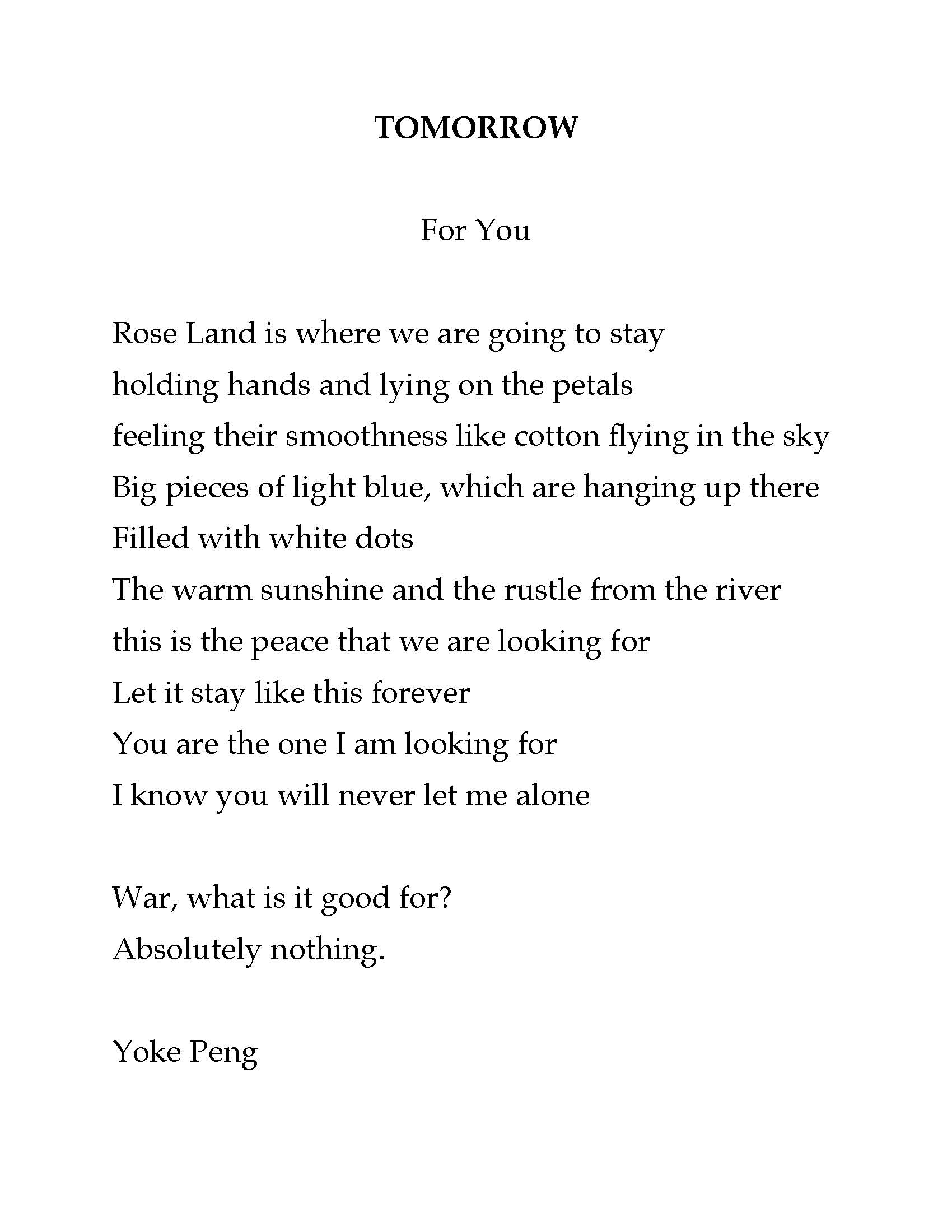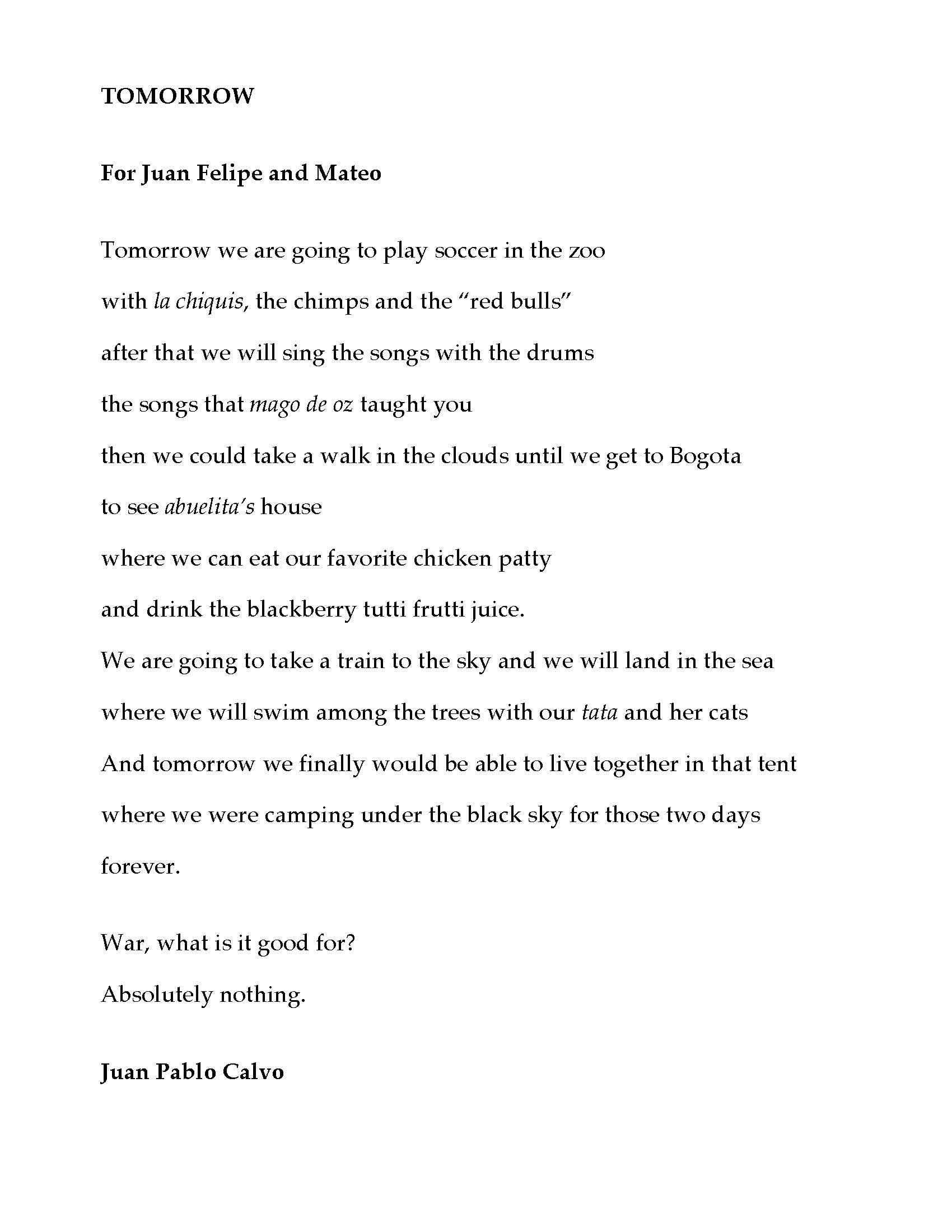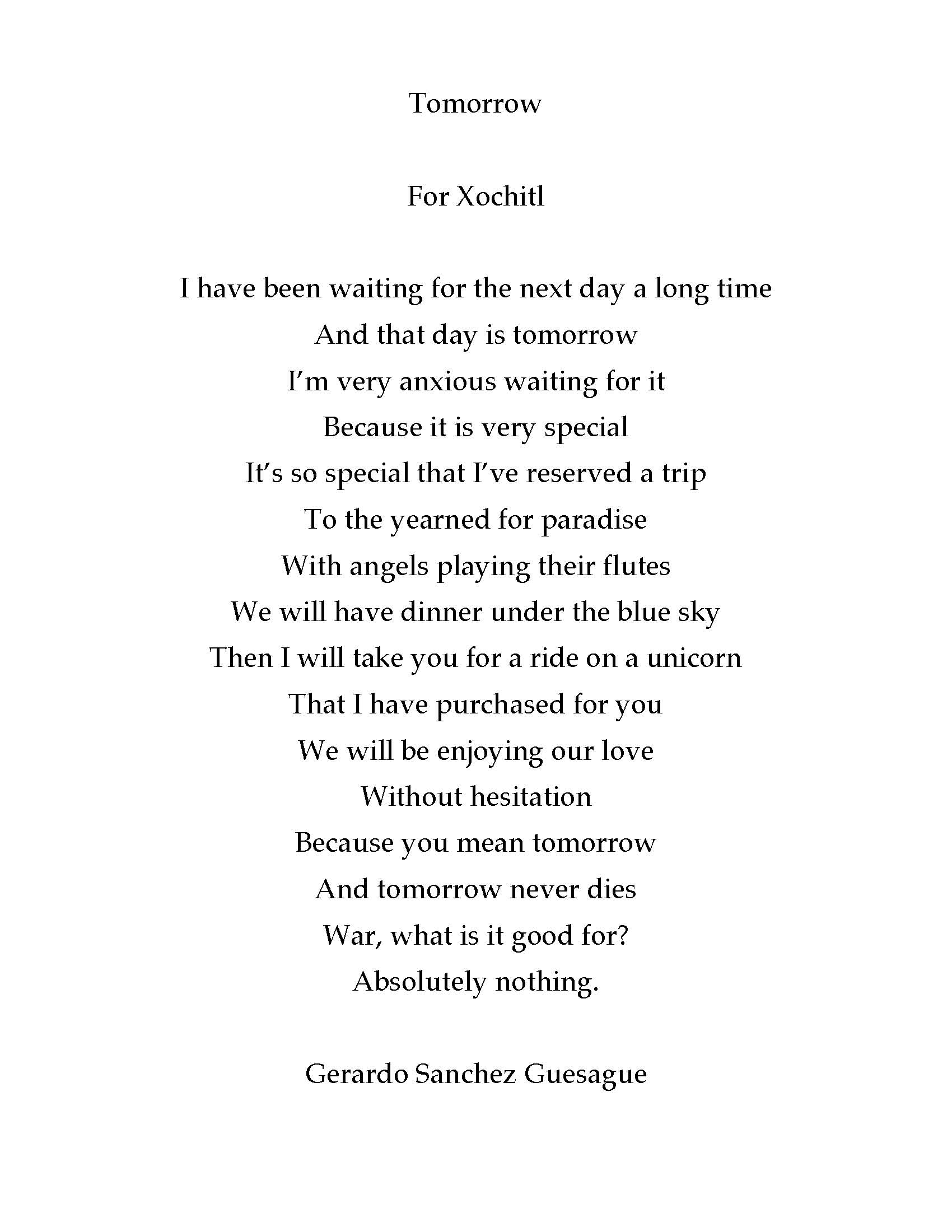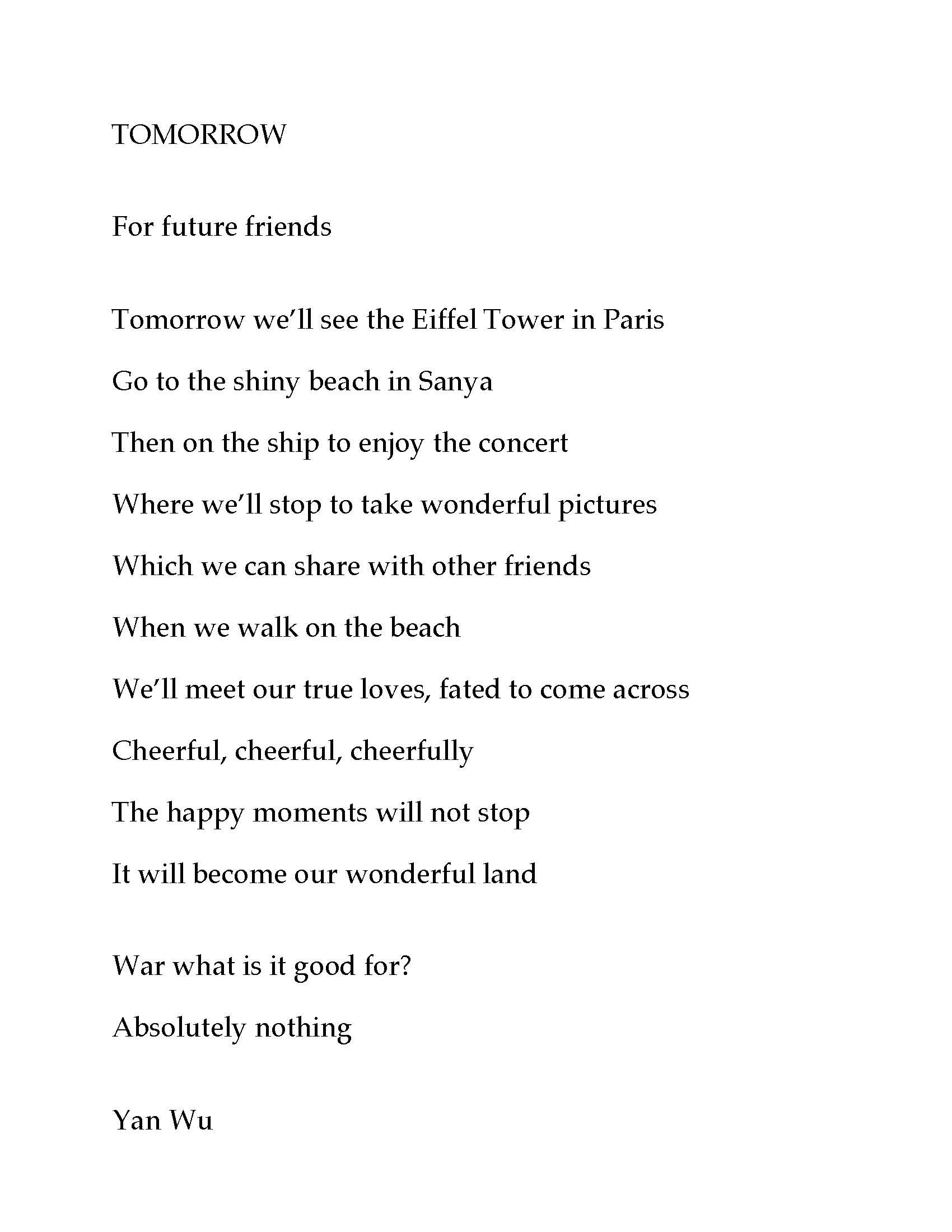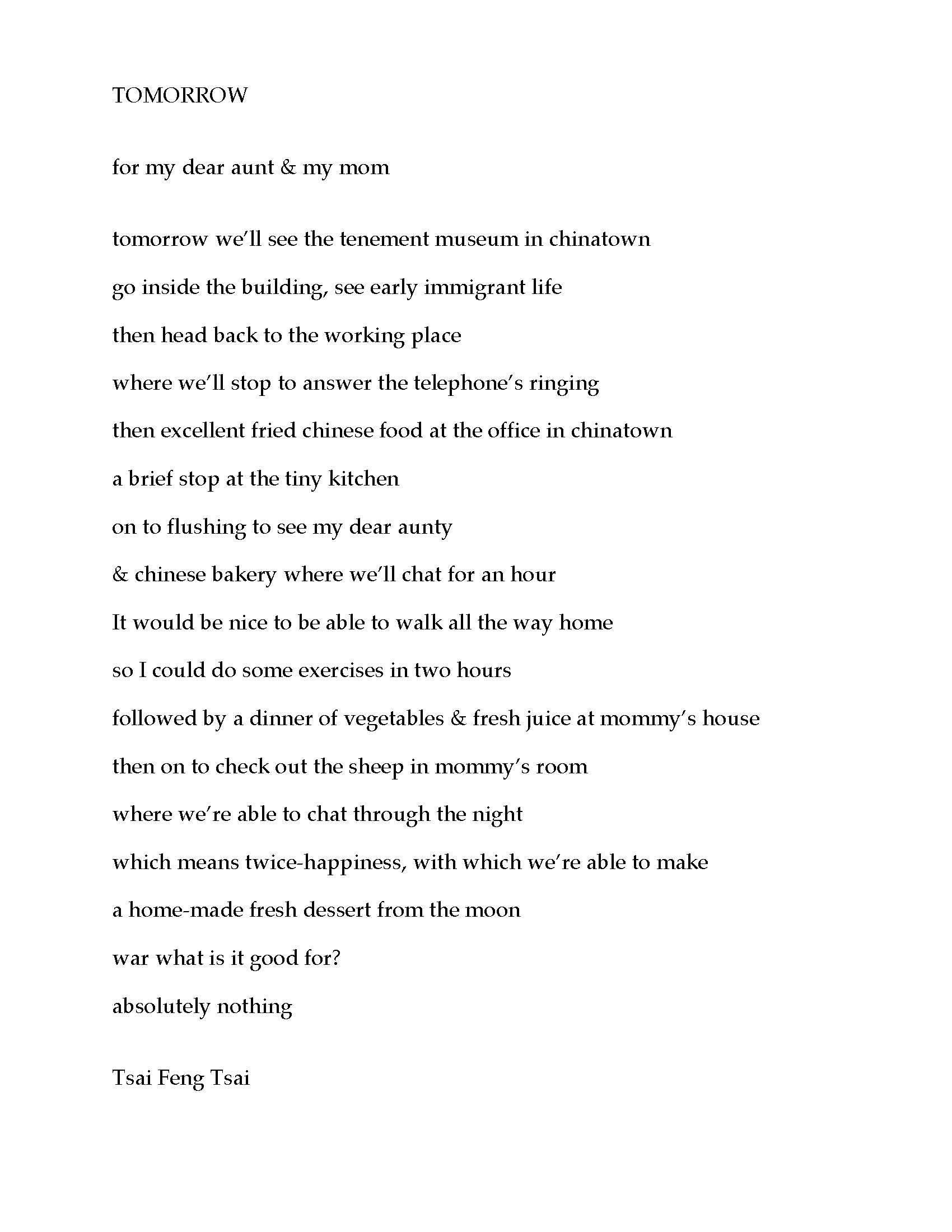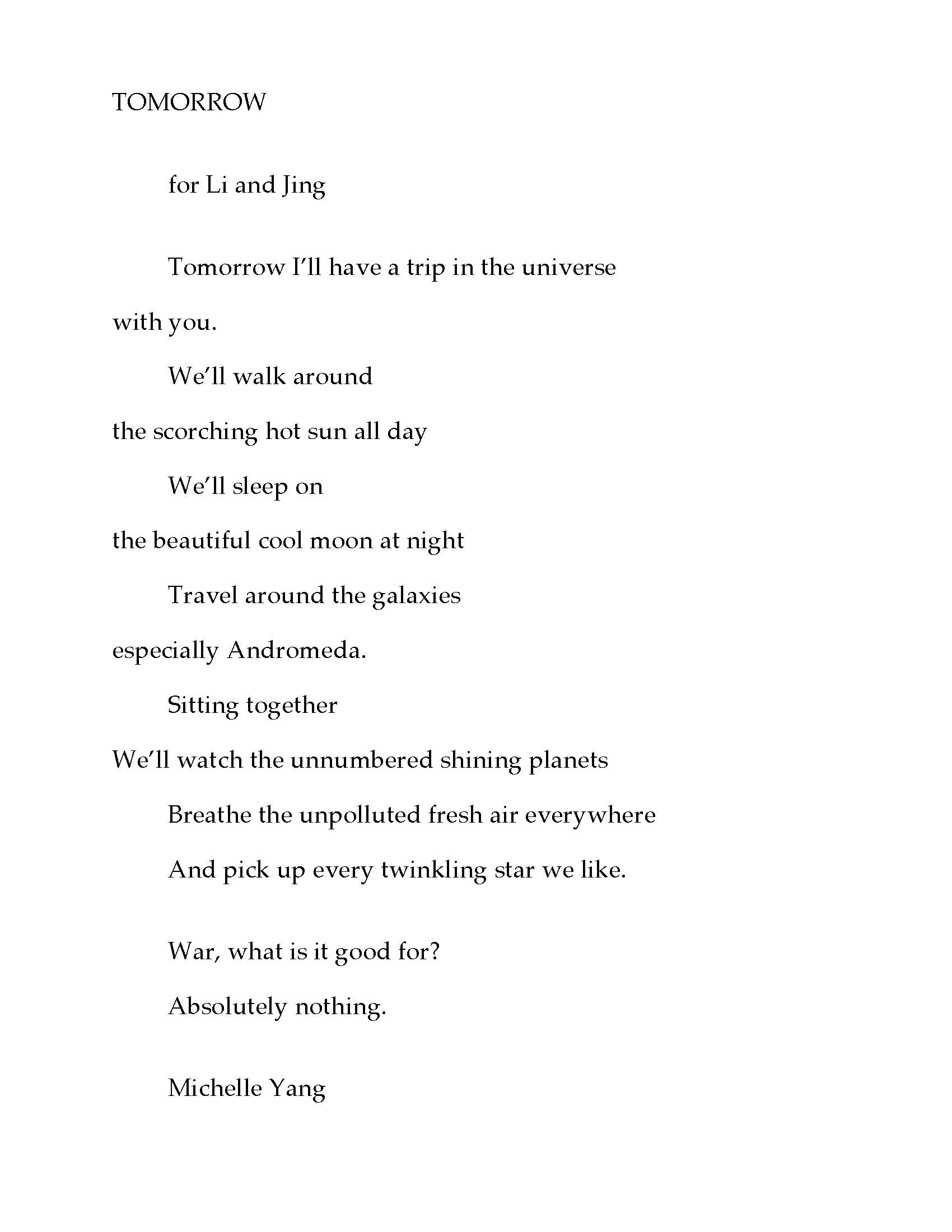…
I admire a poem by Bernadette Mayer called “Tomorrow.” It’s from a book of hers called Scarlet Tanager. The poem is a good prompt to get my ESL students writing about the future and the conditional. In the poem Bernadette moves at an impossible speed, going here and there, seeing this and that in the space of a day, and that day is tomorrow. She is traveling with her son Max and his wife Alyssa. Some of the things they will see are a green heron, a melting ice sculpture, and a pizza made with ricotta cheese and fresh figs. Mmmm. It’s a wonderful world, then George Bush drops his thoughtless bombs. I think Bernadette wrote the poem to protest the Iraq War, contrasting it to love.
…
…
TOMORROW
for max and alyssa
malyyssax worelish
tomorrow we’ll see the lightbulb in schenectady,
go to gems farms in schodack, then on to howe caverns,
then to see the wayne thiebaud show at the clark
where we’ll stop to notice the melting ice sculpture
then excellent spinach sap soup at the thai restaurant
in williamstown, a brief stop at the octagonal museum,
on to northhampton to see the smith college art museum
& greenhouse where we’ll see a green heron
it would be nice to be able to walk today
so we could go to opus 40 in saugerties
followed by a dinner of oysters & mussles at the bear
then on to check out the sheep at the sheepherding inn
where we’re able to buy ricotta cheese
which means twice-baked, with which we’re able
to make a pizza with fresh figs gotten from the berry farm
war what is it good for?
absolutely nothing
…
…
THE LESSON:
1. My students are from Malaysia, Colombia, Mexico, China, Taiwan, Macao, and the Philippines. Their goal is to learn English well enough to get into college. After reading and discussing Bernadette’s poem, I ask them: “If you could spend tomorrow with someone you love and go to all your favorite places, who would you take and where would you go?” I get them thinking about the future tenses, the all important will, am going and are going, and the conditionals, could, would, and should.
2. After giving it some thought, students write a first draft in class. I give them half an hour to an hour to finish. I watch to see when most are done. Those not writing much are urged to write more and hurry up: “Just write. Don’t worry about it. Don’t erase. Cross it out. You can clean it up later. Write your thoughts. Write them! Write!” Those who finish first, reread and check their work.
When everybody’s finished, students exchange drafts with a partner. If there is an odd number in class, one partnership becomes three, each one reading another’s paper. Partners must read their partners’ drafts carefully, indicate where they think a correction is needed, write specific remarks about what they like, and suggest what they would like to see in the poem (how they think it could be better).
3. When the students get their own drafts back, they read what their partners wrote, and reread their work themselves. I let them know they are the final judges of their work; a partner’s remarks are ideas to think about. Students take the poems home, work on them there and bring their second drafts to the next class.
4. I take the second drafts, make copies of them, and circulate them in class. Every student must read and remark about every other student’s poem. I time them at about 10 to 15 minutes a poem watching to see when most students are done: that is ten minutes to read, make suggestions, indicate corrections, and then pass it on. Finally, all students get their own poems back and read what the other students wrote about them, again understanding that they are the final judges of their own work.
5. Students take their poems home and work on them at their leisure giving them more thought. In a day or two, students e-mail their third drafts to me. I read, indicate a correction, say what I like about the poem, make suggestions if I think it could be better (letting them know that they are the final judge of their work), and e-mail it back to them.
6. The students do one more rewrite and then read their poems in front of the class.
My students aren’t actors and English isn’t their first language, but with work and group effort they are all imaginative writers whose poems can bring smiles and tears as well.
Scarlet Tanager is published by New Directions. You can check it out here:

